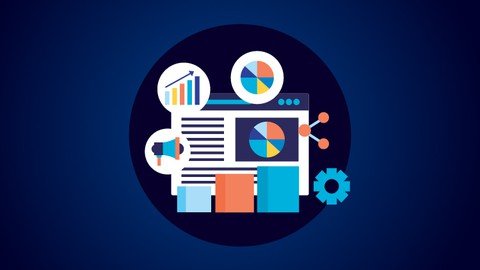
Last updated 7/2020
MP4 | Video: h264, 1280x720 | Audio: AAC, 44.1 KHz
Language: English | Size: 682.10 MB | Duration: 1h 20m
3G Optimization Principles
3G Optimization Principles
What you'll learn
This course of 3G optimization covers the description of
3G Optimization Process
3G Key performance Indicators
Call Flows
Network's Coverage Analysis
Idle Mode and Connected Mode Behaviour
Analysis of Different Issues ; Call Drop, Throughput
Coverage and Capacity Improvement Solutions
Requirements
It is recommended that the Participant has basic knowledge of 3G Fundamentals & 3G air Interface and Call Flows.
Description
The Telecom optimization process is an ongoing process in which the first step is to collect data using the Drive test (DT). Through DT, different Key Performance Indicators (KPI's) are checked and monitored so as to Detect problems in a network. There are multiple metrics like call drop rate, call failure rate, handover failure rate, handover success rate, etc. available which will determine what type of optimization is needed: Physical or parameter. Physical optimization includes tilt adjustments etc. The optimization process includes both Coverage and Capacity. This course of UMTS optimization covers the description of optimization of networks, coverage analysis, throughput analysis, etc. Optimization process - includes pre-optimization process, RF optimization, service optimization (AMR), service optimization (CS and PS), commercial launch, and continuous optimization. RF optimization mainly focuses on RF configurations like Frequency, Bandwidth, defining parameters for idle mode (Cell selection, Reselection), and Dedicated mode and further refining it further on the basis of results.To summarize, we will cover the description of optimization of networks, coverage analysis, throughput analysis, etc. We will also have a look at the principles and techniques that relate to the parameters available in 3G UMTS mainly cell configurations, idle mode, connected mode parameters, key performance indicators. We will dig into various optimization solutions, analyze radio and call drop issues, and various coverage improvement techniques. In all, this course will help you to learn various problems and solutions to the issues in the UMTS network.
Overview
Section 1: 3G Optimization Basics - Part 1
Lecture 1 3G Optimization Overview
Lecture 2 Introduction
Lecture 3 Call Flow
Lecture 4 Mobile Originating Call - Part 1
Lecture 5 Mobile Originating Call - Part 2
Lecture 6 Drive Test
Lecture 7 Drive Test Equipments
Lecture 8 Window Used in WCDMA Drive Test
Lecture 9 Drive Test Tools Configuration
Lecture 10 Drive Test Routes
Lecture 11 Optimization and Overview
Section 2: 3G Optimization Basics - Part 2
Lecture 12 Lecture 1 : 3G Optimization Flow
Lecture 13 Lecture 2: Network Optimization Phases - Flow Chart
Lecture 14 Lecture 3: Single Site Verification
Lecture 15 Lecture 4: Flow Chart of Single Site Verification
Lecture 16 Lecture 5: Physical Audit
Lecture 17 Lecture 6: Verification in Idle Mode
Lecture 18 Lecture 7: Scramble Code Check
Lecture 19 Lecture 8: LAC/RAC Check
Lecture 20 Lecture 9: Near Site Test
Lecture 21 Lecture 10: Verification in Connected Mode
Section 3: 3G Optimization Basics - Part 3
Lecture 22 Lecture 1: Originating and Terminating Connection Test of VP Service
Lecture 23 Lecture 2: Connection Test of PS Services
Lecture 24 Lecture 3: Antenna Diversity Check
Lecture 25 Lecture 4: RF Optimization - Overview
Lecture 26 Lecture 5: Process
Lecture 27 Lecture 6: Key Performance Indicators
Lecture 28 Lecture 7: Targets
Lecture 29 Lecture 8: Data Collection
Lecture 30 Lecture 9: Coverage Analysis
Lecture 31 Lecture 10: Coverage Analysis Processes
Section 4: 3G Optimization Basics - Part 4
Lecture 32 Lecture 1: Pilot Coverage Strength Analysis (RSCP)
Lecture 33 Lecture 2: Pilot Coverage Quality Analysis (Ec/Io)
Lecture 34 Lecture 3: Downlink Coverage Analysis
Lecture 35 Lecture 4: Analyzing Primary Pilot Cell
Lecture 36 Lecture 5: Analyzing Comprasion of UE and Scanner Coverage
Lecture 37 Lecture 6: Uplink Coverage Analysis
Lecture 38 Lecture 7: Distribution of UE Transmit Power
Lecture 39 Lecture 8: Pilot Pollution
Lecture 40 Lecture 9: Judgement Standards
Lecture 41 Lecture 10: Causes
Section 5: 3G Optimization Basics - Part 5
Lecture 42 Lecture 1: Pilot Pollution Problem Analysis
Lecture 43 Lecture 2: Solutions of Pilot Pollution
Lecture 44 Lecture 3: Dropped Call Analysis
Lecture 45 Lecture 4: Call Drop Cases
Lecture 46 Lecture 5: Drop Due To Missing Neighbor
Lecture 47 Lecture 6: Drop Due To DL Poor Coverage
Lecture 48 Lecture 7: Session Error Due To Poor DL Coverage
Lecture 49 Lecture 8: Handover Analysis
Lecture 50 Lecture 9: Parameters Optimization
Lecture 51 Lecture 10: Drive Test
Section 6: 3G Optimization Basics - Part 6
Lecture 52 Lecture 1: Drive Test Data Analysis
Lecture 53 Lecture 2: Adjustment Recommendation and Implementation
Lecture 54 Lecture 3: Test For Special Areas
Lecture 55 Lecture 4: Optimizaiton Report
Lecture 56 Lecture 5: Summary of Optimization Solutions
Radio Network Optimizer, Telecom Professional, Drive Test Engineers.
https://www.udemy.com/course/3g-optimization-basics/
Download From 1DL
https://1dl.net/5hjbigoa5kzm/wvymh.3G.Optimization.Basics.rar

https://rapidgator.net/file/bd23ab9429005cb3b9de97fad7c011e8/wvymh.3G.Optimization.Basics.rar.html

https://uploadgig.com/file/download/4ade398746fc849C/wvymh.3G.Optimization.Basics.rar

https://nitroflare.com/view/EA23A3EFC50C008/wvymh.3G.Optimization.Basics.rar
Links are Interchangeable - No Password - Single Extraction
